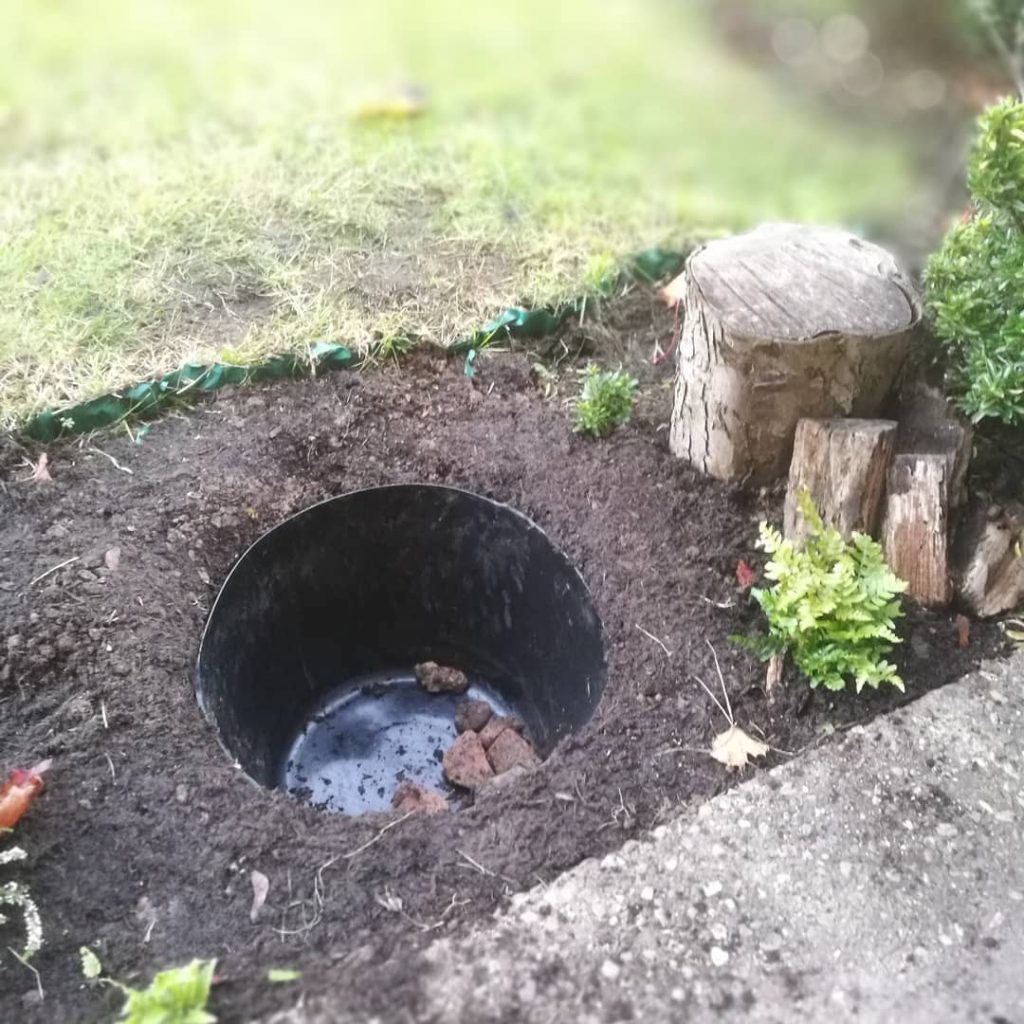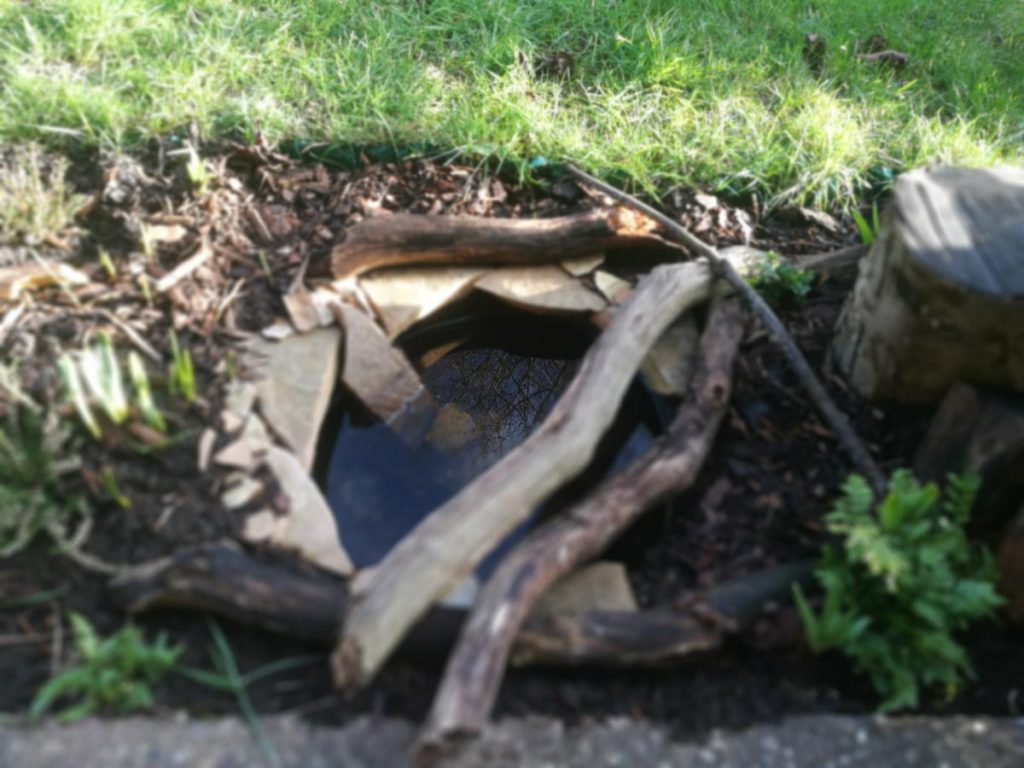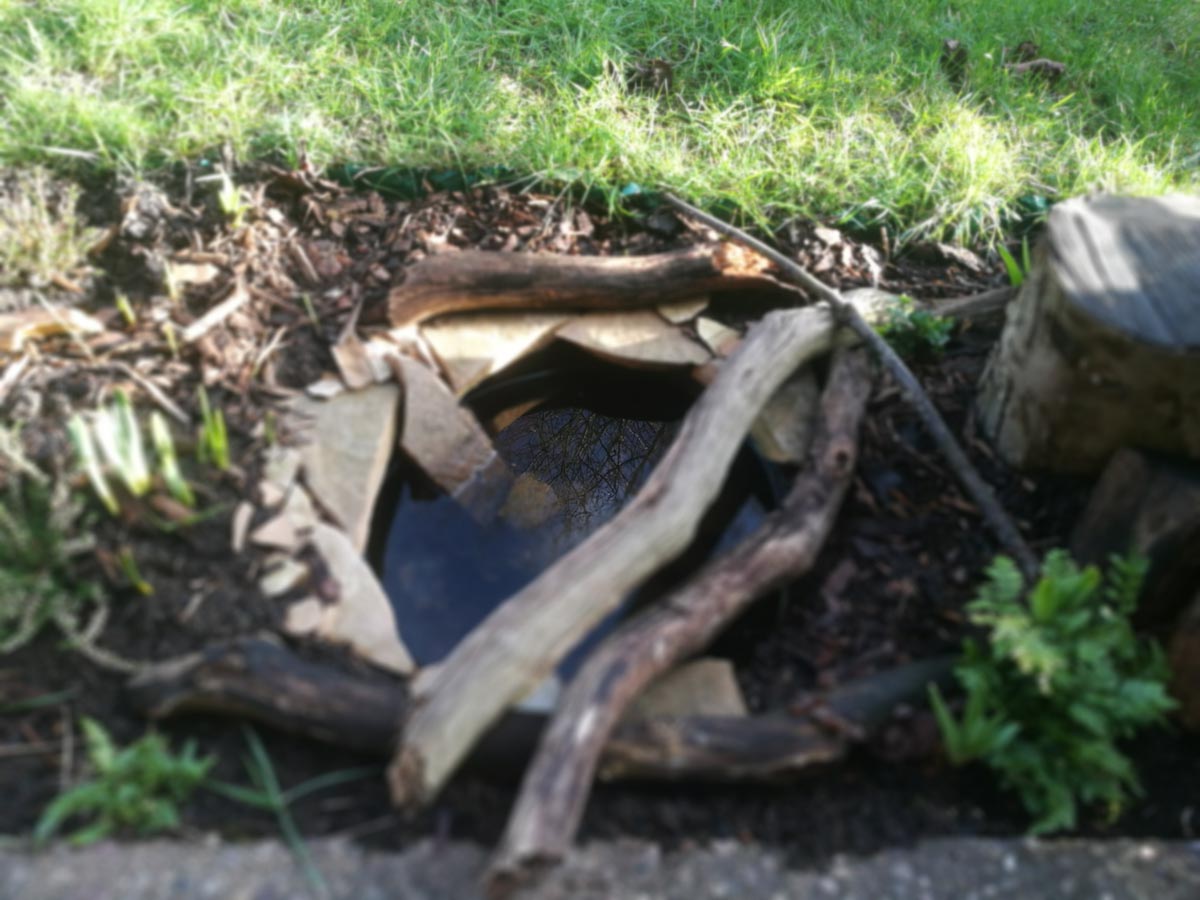Ponds are a wonderful way to encourage wildlife to the garden and so easy you can create a wildlife pond in five easy steps – and also to bring some beneficial critters to help in the garden!
This post contains affiliate links to products that I have used or recommend. I have made these as unobtrusive as possible. You can learn more about what these do here.
Step one: Choose where you’re going to put it
Where do put a pond is the first consideration. A light warm area is best for wildlife – to enable wildlife to thrive they need warmth. How deep it is will also have an effect of how warm the pond will enable to get.
Step two: Dig a hole
You didn’t see this coming did you? Dig a hole for you pond. When you’re creating a wildlife pond have a variety of depths to provide different levels for plants. and shallow areas for wildlife that falls in to get out. If we think about nature – temporary ponds also have an importance – so a shallow ponds that dry up could be just as good and permanent ponds.
We’re using one of these 40 litre buckets to line our pond so it will sit in our plant border next to our meadow lawn. If you;re using a liner it is best to remove any sharp stones and line with sand.

Step three: Add rocks and sand
Line the pond with rocks and sand, if you’re using a liner it i best to use sand to avoid puncturing it. Make sure if you use a deep tub like we are to create a ramp to stop any hedgehogs from not being able to get out if they fall in!

Step four: Let it fill with water
Rainwater is best for ponds, so wait for the rain or fill it with collected rainwater!
Step five: Add plants (and maybe some snails)
After a few weeks you can add plants – we are currently slowly adding plants to our pond, we’ve started with some water starwort – a good surface cover that allows insect to land and drink/lay eggs and also produce oxygen. In the future we’re going to introduce frogbit, hornwort, march marigold, brooklime, bugle, and forget-me-not. Each of these will provide plants providing cover, climbing perches and oxygen to the pond.
We’ve been fortunate enough to get some snails in the pond, and water fleas that appear to be keeping the water clear of algae.
There you go as simple as that!
Quick note on water safety: Never leave children alone around water. We’re using the pond as a learning aid to teach Little Miss Greener some water safety rules.

